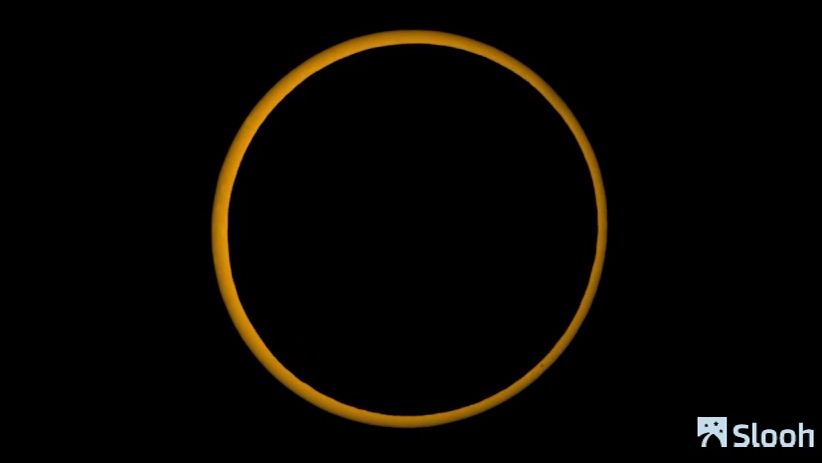
A "ring of fire" solar eclipse will briefly appear in parts of Africa and Asia this weekend, and if you aren't out there in person, you can take in the spectacular show online.
Sunday's solar eclipse is what is known as an annular eclipse, in which the moon does not completely cover the sun as it passes between the star and Earth as seen from our planet. Instead, a ring of sunlight will still shine around the outer edge, hence its nickname: a "ring of fire" eclipse.
Regions in the path of visibility include the Democratic Republic of the Congo, Central African Republic, South Sudan, Sudan, Ethiopia, the Red Sea, Yemen, Saudi Arabia, Oman, the Gulf of Oman, Pakistan, India, China, Taiwan, the Philippine Sea (south of Guam), northern Australia and the north Pacific Ocean.
While you will need to take precautions to protect your eyes if you are there in person, online the solar eclipse is perfectly safe to view with unprotected eyes. There are several options available.
Astronomy broadcasting service Slooh will have a virtual star party starting at 1 a.m. EDT (0500 GMT). You can watch it live here on Space.com, courtesy of Slooh.
While the general public can also stream the show on Facebook, Twitter and YouTube, paid Slooh members (individual membership annual prices start at $20 USD) can join a live discussion together at Slooh.com.
"Slooh will feature live streams of the eclipse from several partner observatories in the Middle East, India, and the Far East," Slooh said in a release. "Members will be able to snap photos of the eclipse throughout the live coverage. They can load their images into Slooh's new Eclipse Quest, which will automatically generate a superb memento poster of the event."
Time and Date, a website that tracks skywatching events, will start its own webcast at 1 a.m. EDT (0500 GMT).
"Due to COVID-19 travel restrictions, our original plan of sending our mobile observatory to Oman had to be scrapped," representatives stated about the broadcast. "While we are sad about not being able to go, we are working hard to make sure that we still bring you stunning live images and commentary of this extraordinary astronomical event."
The Virtual Telescope Project will begin its webcast at 1:30 a.m. EDT (0530 GMT). The company is based in Rome, but will partner with imagers and videographers in Africa and Asia "thanks to very generous people willing to share their views with the world," said founder Gianluca Masi in a statement.
"Yes, it will be somewhat unique; the … solar eclipse will happen soon after the solstice, making the event even more fascinating," Masi added.
Participants in The Virtual Telescope Project's webcast so far include Masi himself, Ahmed Saad (Karachi, Pakistan), the Taqwa Observatory in Pakistan, Space India, the Astronomical Society of Somalia, Abu Dhabi's International Astronomical Center, Ali Abdullah (Lahore, Pakistan) and Lij Tuha (Dodola, Ethiopia.)
While the path of the eclipse is long — going across two continents and 14 countries — the path of greatest visibility is quite narrow, Time and Date said. In West Africa, the path reaches its maximum width of 53 miles (85 kilometers) wide and the "ring of fire" lasts for about 1 minute and 20 seconds.
Sunday's "ring of fire" solar eclipse comes amid the so-called eclipse season of 2020, which features three eclipses (two of the moon and one of the sun) in the space of one month.
The first event was a relatively minor penumbral lunar eclipse on June 5. After Sunday's solar eclipse, another minor lunar eclipse will occur overnight on July 4 and 5.